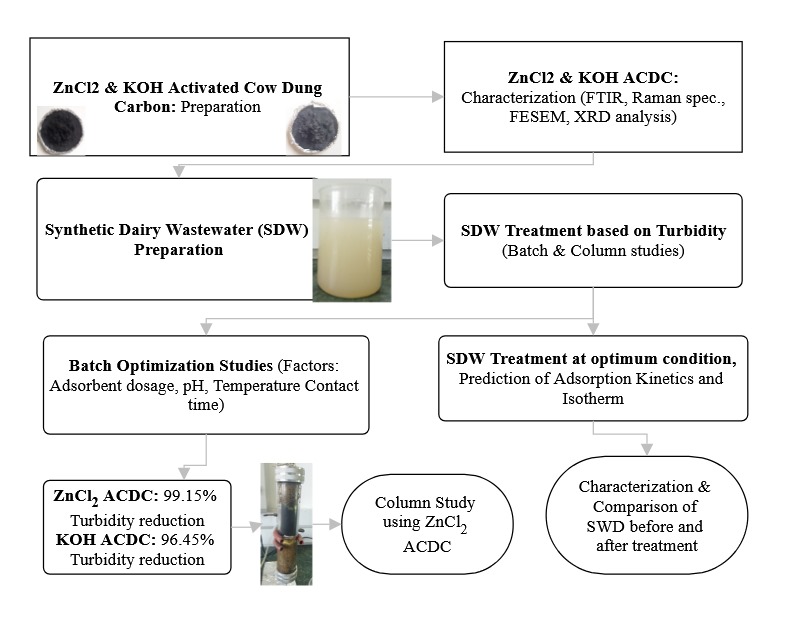
The dairy industry is a major food industry that processes raw milk into a variety of products. The milk processing factory produces DWE with soluble organic components, suspended particles, and trace elements. These components degrade, causing cloudiness and odour. Adsorbing total solids (TS) and controlling odour levels in dairy wastewater help to minimize odour. This study investigates the process of producing activated carbon from cow dung (ACDC) and its use in cleaning synthetic dairy wastewater (SDW) by batch adsorption and column adsorption studies. Cow dung powder is chemically activated by soaking it in 1N ZnCl2 and 1N KOH solutions in a 2:1 ratio. The optimal adsorbent concentration for both ACDC was 2.5 g/50 ml. The effectiveness of ACDC treatment was evaluated by its ability to reduce turbidity, TDS, and COD. The study found that activated carbon with ZnCl2 was slightly more effective than activated carbon with KOH. While the KOH ACDC was more effective at a pH of 8, achieving a removal rate of 92.88%, the ZnCl2 ACDC achieved a turbidity removal of 93.3% at a pH of 4. The present work highlights the potential for activated carbon derived from cow dung to effectively and sustainably treat dairy effluent.
Total file downloads: 29